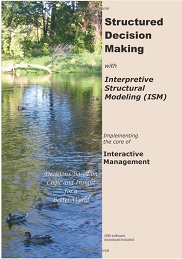Structured Decision Making with Interpretive Structural Modeling

This book provides the theoretical background of the Interpretive Structural Modeling (ISM) method as well as detailed instructions for both individual and group use. It does not attempt to teach general facilitation skills, but does provide numerous practical tips for facilitators wishing to use ISM for group decision making sessions.
This book This book is available at Amazon.com including the learning software - Buy book and software at Amazon.com. It includes everything that you need to try out the ISM method.
For other purchase options, see Concept Star Order Information